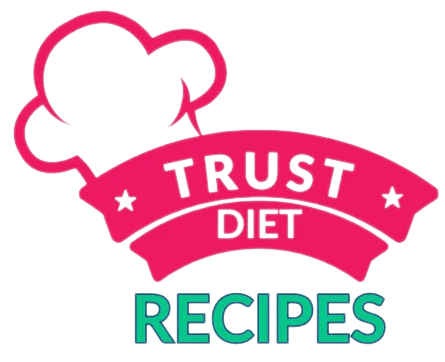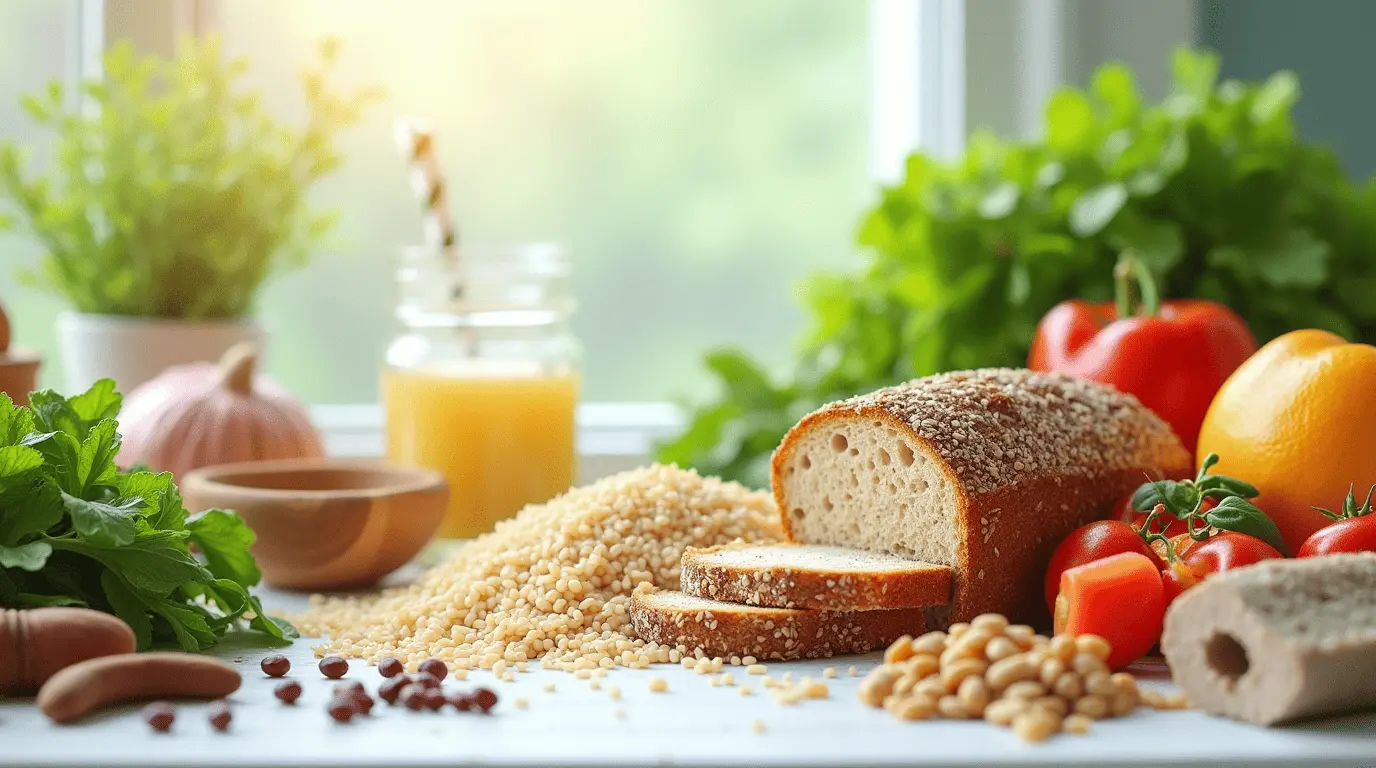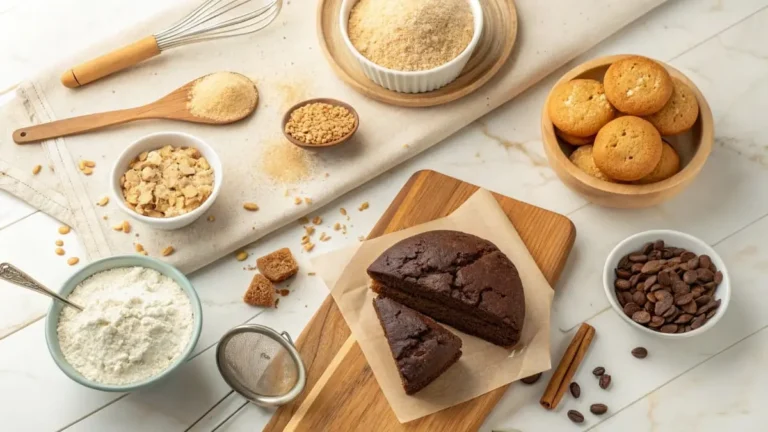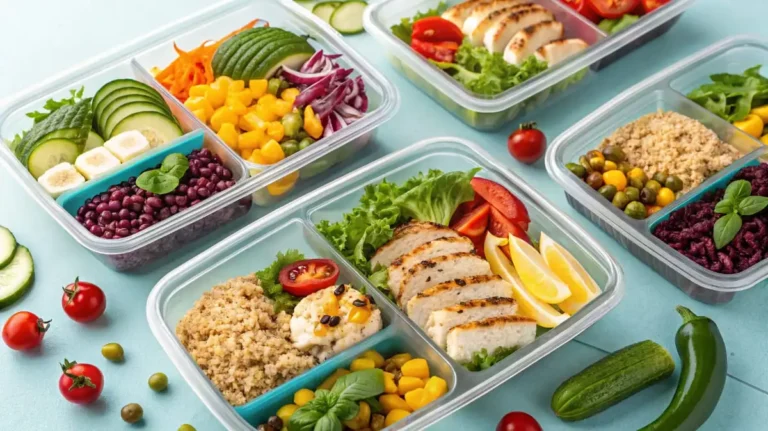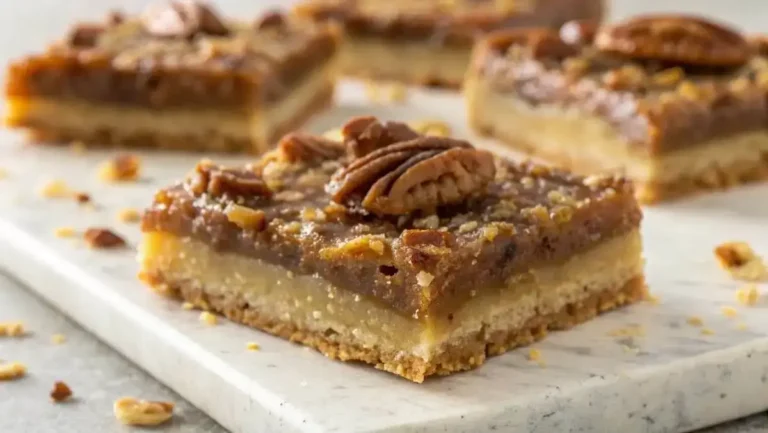The Complete Guide to Gluten Free Diet Benefits: For Celiac, Sensitivity & More
Do you feel like everyone is talking about “gluten-free” these days? You’re not wrong! Walk down any grocery aisle, and you’ll see “gluten-free” labels popping up on everything from bread to cookies to even sauces. It’s become a major food trend, and for good reason. What started as a must-do for people with certain health conditions has now become a lifestyle choice for many.
Maybe you’ve heard that going gluten-free can help with weight loss, boost your energy, or even clear up your skin. Or maybe you know someone with celiac disease and are curious about what their diet is all about. Whatever your reason, you’re in the right place to learn more!
The truth is, that a gluten-free diet can offer some real benefits for certain people. But it’s not a magic bullet for everyone, and it’s important to understand both the good and the not-so-good before you jump in. Just like any diet, going gluten-free has its pros and cons, and knowing them will help you decide if it’s the right path for you and your health goals.
In this gluten free diet benefits guide, we’re going to explore the world of gluten-free eating clearly and easily. We’ll break down what gluten is (it’s not as scary as it sounds!), who benefits from cutting it out, and what those benefits are. We’ll also give you practical, chef-approved tips on how to go gluten-free healthily, and sustainably – because eating well should always be delicious and enjoyable! So, let’s get started and uncover the secrets of the gluten-free diet together!
Table of Contents
Gluten: The Protein We’re Talking About – What Is It Really?
Before we start talking about avoiding gluten, let’s understand what it is. You hear the word “gluten” all the time, but what does it mean?
Gluten: The Sticky Superhero (and Sometimes Villain)
Imagine making bread dough. You mix flour and water, and as you knead, the dough becomes stretchy and elastic. That stretchiness? That’s thanks to gluten.
Gluten is a group of proteins found naturally in certain grains. The main grains we’re talking about are:
- Wheat: This is the big one. Think of all the foods made with wheat flour – bread, pasta, crackers, cakes, cookies, pastries, and so much more.
- Barley: Barley is used in things like malt syrup, malt flavoring, and some beers.
- Rye: Rye bread is a type of bread with a distinct flavor, and it also contains gluten.
- Triticale: This is a hybrid grain, a mix of wheat and rye, so yes, it has gluten too.
Think of gluten proteins like tiny, springy coils. When you mix flour with water, these gluten proteins link up and form a network. This network is what gives dough its structure and elasticity. It’s what traps air bubbles in bread, making it rise and become light and fluffy. It’s what makes pasta chewy and satisfying.
For Most People, Gluten is No Big Deal
For the majority of people, gluten is completely harmless. Your digestive system breaks down gluten proteins just like any other protein in food. It doesn’t cause any problems, and you probably never even think about it. You can eat bread, pasta, and cookies without any issues.
But for Some… Gluten Can Be a Problem
However, for a significant number of people, gluten can be a real troublemaker. Their bodies react negatively to gluten, leading to a range of health issues. This is where gluten-free diets become medically necessary or a helpful lifestyle choice. We’ll talk more about who these people are in the next section.
Gluten Free Diet Benefits: Who Benefits & Why?
Going gluten-free isn’t just a trend; it’s a medical necessity for some and a helpful choice for others. Let’s look at the different groups of people who can benefit from avoiding gluten.
1. Celiac Disease: Gluten as the Enemy
For people with celiac disease, gluten is not just a protein – it’s a trigger for their immune system to attack their own body. Celiac disease is a serious autoimmune disorder. When someone with celiac disease eats gluten, their immune system mistakenly sees gluten as a harmful invader. It launches an attack, and the main target is the lining of the small intestine.
This immune attack damages the tiny, finger-like projections in the small intestine called villi. Villi are super important because they help your body absorb nutrients from food. When villi are damaged, your body can’t absorb nutrients properly, leading to malnutrition and a whole host of health problems.
Symptoms of Celiac Disease Can Vary, But Common Ones Include:
- Digestive Problems: Chronic diarrhea or constipation, bloating, gas, stomach pain, nausea, vomiting.
- Weight Loss or Malnutrition: Difficulty absorbing nutrients can lead to unintentional weight loss and deficiencies in vitamins and minerals.
- Fatigue and Weakness: Malnutrition and inflammation can cause persistent fatigue and weakness.
- Anemia (Low Iron): Poor nutrient absorption can lead to iron deficiency anemia.
- Skin Rashes (Dermatitis Herpetiformis): A specific itchy, blistering skin rash linked to celiac disease.
- Bone and Joint Pain: Malabsorption and inflammation can affect bones and joints.
- Nervous System Problems: In some cases, celiac disease can affect the nervous system, causing headaches, nerve damage, or cognitive issues.
- Infertility and Miscarriage: Untreated celiac disease can impact reproductive health.
- Growth Problems in Children: Malnutrition can hinder growth and development in children.
The Only Treatment for Celiac Disease: A Strict Gluten-Free Diet
There is no medication to cure celiac disease. The only way to manage celiac disease and prevent long-term damage is to follow a strict, lifelong gluten-free diet. This means completely avoiding all sources of gluten in food, drinks, and even some medications and personal care products.
When someone with celiac disease follows a gluten-free diet, their small intestine can heal, and they can start absorbing nutrients properly again. Symptoms usually improve significantly, and the risk of long-term complications decreases dramatically. For people with celiac disease, a gluten-free diet isn’t a choice – it’s essential for their health and survival.
2. Non-Celiac Gluten Sensitivity (NCGS): Feeling Better Without Gluten
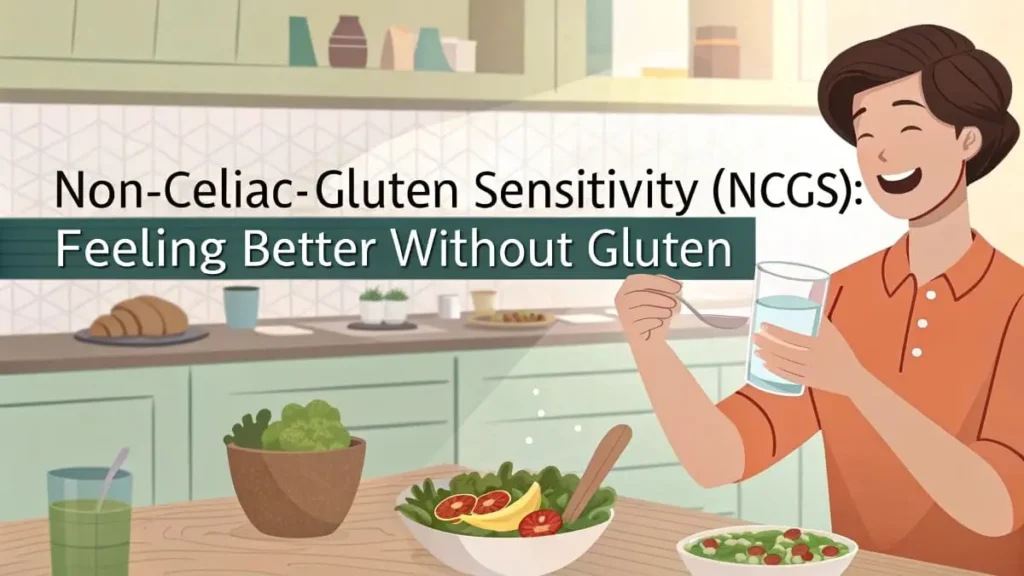
Another group of people who benefit from a gluten-free diet are those with Non-Celiac Gluten Sensitivity (NCGS), also sometimes called Gluten Intolerance. People with NCGS don’t have celiac disease or wheat allergy, but they still experience symptoms after eating gluten.
It’s not an autoimmune disease like celiac disease, and it doesn’t cause damage to the small intestine. But NCGS can still make you feel pretty miserable.
Symptoms of Non-Celiac Gluten Sensitivity (NCGS) Can Include:
- Digestive Issues: Bloating, gas, stomach pain, diarrhea, constipation (similar to IBS symptoms).
- Fatigue and “Brain Fog”: Feeling tired, sluggish, and having difficulty concentrating.
- Headaches.
- Joint and Muscle Pain.
- Skin Problems: Eczema, rashes.
- Mood Changes: Anxiety, depression.
Why Gluten-Free Helps with NCGS:
Scientists are still learning exactly what causes NCGS. It likely involves the immune system and inflammation in the gut, but not the same type of autoimmune response seen in celiac disease. It’s also possible that some symptoms attributed to gluten sensitivity might be caused by other components of wheat, such as FODMAPs (certain types of carbohydrates).
Regardless of the exact cause, many people with NCGS find that eliminating gluten from their diet significantly reduces or eliminates their symptoms and improves their overall well-being. For people with NCGS, a gluten-free diet is a lifestyle choice that can dramatically improve their quality of life.
3. Wheat Allergy: An Allergic Reaction to Wheat Proteins
Wheat allergy is different from both celiac disease and NCGS. Wheat allergy is a true food allergy. It’s an immune response to proteins found in wheat (not just gluten, but other wheat proteins as well). When someone with a wheat allergy eats wheat, their immune system reacts quickly and can cause allergic symptoms.
Symptoms of Wheat Allergy Can Range from Mild to Severe and Can Include:
- Skin Reactions: Hives, rash, itching, eczema.
- Digestive Symptoms: Nausea, vomiting, diarrhea, stomach pain.
- Respiratory Symptoms: Wheezing, coughing, runny nose, difficulty breathing.
- Anaphylaxis (Severe Allergic Reaction): In severe cases, wheat allergy can cause anaphylaxis, a life-threatening reaction that can include difficulty breathing, swelling of the throat, drop in blood pressure, and loss of consciousness. Anaphylaxis requires immediate medical attention (usually an epinephrine injection – EpiPen).
Managing Wheat Allergy: Strict Avoidance of Wheat
The primary way to manage wheat allergy is to strictly avoid wheat and wheat-containing foods. This is similar to a gluten-free diet in that it excludes wheat, but it’s important to note that wheat allergy is specifically about avoiding wheat proteins, not just gluten. Some people with wheat allergy may be able to tolerate other gluten-containing grains like barley and rye (though often cross-contamination is a concern). Always consult with an allergist for personalized advice.
Important Note: If you suspect you have celiac disease, NCGS, or wheat allergy, it’s crucial to get a proper diagnosis from a doctor. Don’t self-diagnose and start a gluten-free diet without medical advice, especially if you are being tested for celiac disease, as being on a gluten-free diet can affect test results.
Gluten Free Diet Benefits: Top Upsides You’ll Love
For those who need to avoid gluten for medical reasons, the benefits are clear – managing their condition and improving their health. But even for others, a gluten-free diet might offer some positive changes. Let’s explore the top benefits people often report when going gluten-free.
1. Improved Digestive Health: Say Goodbye to Bloating and Discomfort
One of the most common and noticeable benefits of a gluten-free diet, especially for those with celiac disease or NCGS, is improved digestion. Gluten can irritate the digestive system in these individuals, leading to a whole host of uncomfortable symptoms.
How Gluten-Free Helps Digestion:
- Reduces Inflammation in the Gut: For people with celiac disease, gluten triggers inflammation and damage in the small intestine. Eliminating gluten allows the gut to heal and reduces this inflammation. Even in NCGS, gluten may contribute to gut inflammation and irritation.
- Relieves Digestive Symptoms: By removing gluten, many people experience relief from:
- Bloating and gas
- Stomach pain and cramps
- Diarrhea and constipation
- Heartburn and acid reflux
- Irritable Bowel Syndrome (IBS)-like symptoms
- Promotes Better Nutrient Absorption: In celiac disease, damaged villi hinder nutrient absorption. A gluten-free diet allows the villi to heal, improving the body’s ability to absorb vitamins, minerals, and other essential nutrients from food.
Chef’s Tip for Digestive Comfort: To experience gluten free diet benefits related to digestion, focus on naturally gluten-free foods that are also easy to digest. Cooked vegetables, lean proteins, and well-cooked gluten-free grains like rice and quinoa are gentle on the stomach and contribute to these benefits. However, avoid overly processed gluten-free substitutes, as these can be high in added sugars or fats and may hinder gluten free diet benefits, potentially worsening digestive issues for some.
2. Increased Energy Levels: Feeling Less Tired and More Vibrant
Chronic fatigue is a surprisingly common symptom of undiagnosed gluten intolerance, celiac disease, and even NCGS. Feeling tired all the time, even after enough sleep, can be a sign that something is off. A gluten-free diet can often lead to a noticeable boost in energy levels.
How Gluten-Free Boosts Energy:
- Reduces Inflammation, Which Drains Energy: Chronic inflammation, often triggered by gluten in sensitive individuals, is a major energy drainer. By reducing inflammation, a gluten-free diet can free up energy for other bodily functions.
- Improves Nutrient Absorption, Fueling Your Body: When your body is properly absorbing nutrients, it has the building blocks and fuel it needs to function optimally. Better nutrient absorption translates to more energy production at the cellular level.
- Stabilizes Blood Sugar Levels: Diets high in processed gluten-containing foods (like white bread, sugary cereals, pastries) can lead to blood sugar spikes and crashes, resulting in energy dips. A well-planned gluten-free diet often focuses on whole foods and gluten-free grains with a lower glycemic index, promoting more stable blood sugar and sustained energy.
Chef’s Tip for Energy-Boosting Meals: Incorporate plenty of lean protein, healthy fats, and complex carbohydrates from gluten-free whole grains and vegetables into your gluten-free diet. Think meals like grilled chicken with quinoa and roasted vegetables, or lentil soup with brown rice. These provide sustained energy release and prevent energy crashes.
3. Weight Management: Potentially Easier to Maintain a Healthy Weight
While a gluten-free diet isn’t automatically a weight-loss diet, it can indirectly support weight management for some people. It’s not about magically losing weight just by cutting out gluten, but about the changes in eating habits that often come with going gluten-free.
How Gluten-Free Can Support Weight Management:
- Encourages Whole Food Choices: When you go gluten-free, you often start paying more attention to ingredient labels and focusing on whole, unprocessed foods that are naturally gluten-free – fruits, vegetables, lean proteins, gluten-free grains. These foods are typically lower in calories and higher in nutrients and fiber compared to processed gluten-containing foods.
- Reduces Consumption of Processed Junk Food: Many common processed junk foods – cakes, cookies, pastries, white bread, sugary cereals, many fast foods – are high in gluten. Going gluten-free naturally reduces your intake of these calorie-dense, nutrient-poor foods.
- May Improve Insulin Sensitivity: Some research suggests that gluten sensitivity and celiac disease may be linked to insulin resistance. A gluten-free diet may help improve insulin sensitivity, which can positively impact weight management.
- Reduces Bloating and Water Retention: For some people, gluten can contribute to bloating and water retention. Eliminating gluten can reduce these issues, leading to a feeling of being lighter and less puffy.
Important Note about Gluten-Free and Weight Loss: Just because something is labeled “gluten-free” doesn’t automatically make it healthy or low-calorie. Many processed gluten-free substitutes (gluten-free cookies, cakes, breads, pasta) can be just as high in calories, sugar, and unhealthy fats as their gluten-containing counterparts. If your goal is weight management, focus on building your gluten-free diet around whole, naturally gluten-free foods, not just processed substitutes.
Chef’s Tip for Weight-Conscious Gluten-Free Eating: Load up on vegetables! Vegetables are naturally gluten-free, low in calories, high in fiber and nutrients, and incredibly versatile. Make vegetables the star of your gluten-free meals. Roast, grill, sauté, steam, or enjoy them raw in salads. They’ll help you feel full and satisfied without adding excess calories.
4. Better Skin Health: Clearing Up Skin Conditions for Some
Believe it or not, your gut health and your skin health are closely connected! For some people with gluten sensitivity or celiac disease, gluten can contribute to skin problems. Going gluten-free may improve certain skin conditions.
How Gluten-Free Can Benefit Skin Health:
- Reduces Inflammation Throughout the Body: Inflammation is a key factor in many skin conditions, like eczema and psoriasis. By reducing inflammation in the gut and body, a gluten-free diet may help alleviate these skin issues for some individuals.
- May Improve Eczema and Psoriasis: Some studies and anecdotal evidence suggest that people with gluten sensitivity and eczema or psoriasis see improvement in their skin conditions when they eliminate gluten.
- May Reduce Acne: While research is still ongoing, some people find that going gluten-free helps reduce acne breakouts. This may be related to reduced inflammation and improved gut health.
Important Note about Skin Health and Gluten-Free: A gluten-free diet is not a guaranteed cure for all skin conditions, and skin problems can have many different causes. However, if you have gluten sensitivity or celiac disease and skin issues like eczema, psoriasis, or persistent acne, it’s worth considering whether a gluten-free diet might help improve your skin health, in consultation with your doctor or dermatologist.
Chef’s Tip for Skin-Healthy Gluten-Free Meals: Focus on foods rich in antioxidants and anti-inflammatory compounds, which are great for both gut and skin health. Include plenty of colorful fruits and vegetables (especially berries, leafy greens, bell peppers), fatty fish (salmon, tuna), nuts and seeds (almonds, walnuts, flaxseeds), and healthy fats like olive oil and avocado.
5. Reduced Inflammation: Beneficial for Autoimmune and Chronic Conditions
Chronic inflammation is a root cause of many modern diseases, including autoimmune conditions, heart disease, type 2 diabetes, and even some cancers. For people with gluten sensitivity or celiac disease, gluten can be a major trigger for inflammation in the body. A gluten-free diet can help reduce overall inflammation.
How Gluten-Free Reduces Inflammation:
- Eliminates a Major Inflammatory Trigger: For individuals with celiac disease and NCGS, gluten itself is an inflammatory trigger. Removing it from the diet reduces this key source of inflammation.
- May Improve Autoimmune Conditions: Some people with autoimmune conditions like rheumatoid arthritis, Hashimoto’s thyroiditis, and lupus report symptom improvement on a gluten-free diet. While research is ongoing, reducing gluten-related inflammation may help manage these conditions for some individuals.
- May Benefit Other Chronic Inflammatory Conditions: By reducing overall inflammation, a gluten-free diet may have broader benefits for conditions linked to chronic inflammation, such as heart disease, type 2 diabetes, and neurodegenerative diseases (though more research is needed in these areas).
Important Note about Inflammation and Gluten-Free: A gluten-free diet is not a cure-all for inflammatory conditions, and inflammation is a complex process with many contributing factors. However, for people with gluten sensitivity or celiac disease, or those who suspect gluten may be contributing to their inflammation, a gluten-free diet can be a valuable tool for reducing inflammation and improving overall health, in conjunction with medical advice and treatment.
Chef’s Tip for Anti-Inflammatory Gluten-Free Cooking: Incorporate spices known for their anti-inflammatory properties into your gluten-free cooking. Turmeric, ginger, cinnamon, cloves, rosemary, and oregano are all delicious and can help fight inflammation. Use them generously in your gluten-free recipes to boost both flavor and health benefits!
Making Gluten-Free Work: Practical Tips for a Successful Transition
Okay, you’re convinced that gluten-free might be worth a try, or maybe it’s medically necessary for you. How do you do it successfully? Here are some practical tips to help you adopt a gluten-free diet healthily and sustainably.
1. Become a Gluten Detective: Learn to Identify Hidden Gluten Sources
Gluten isn’t always obvious. It’s not just in bread and pasta. It can hide in many processed foods as thickeners, binders, or flavor enhancers. Becoming a label-reading expert is essential for gluten-free success.
Common Hidden Sources of Gluten to Watch Out for:
- Soy Sauce (Traditional): Made with wheat. Choose gluten-free tamari or coconut aminos instead.
- Salad Dressings and Sauces: Many creamy dressings, vinaigrettes, and pre-made sauces are thickened with wheat flour or contain malt vinegar. Look for gluten-free labels or make your own from scratch.
- Processed Meats: Sausages, deli meats, hot dogs, meatballs, meatloaf often contain gluten fillers, binders, or breadcrumbs. Choose unprocessed, unseasoned meats or specifically labeled gluten-free versions.
- Soups (Canned and Restaurant): Creamy soups, many broth-based soups, and canned soups are often thickened with wheat flour. Choose broth-based soups carefully or make your own gluten-free soups.
- Flavored Chips and Snacks: Many flavored potato chips, tortilla chips, and snack mixes contain gluten in their seasonings or coatings. Choose plain chips or certified gluten-free flavored options.
- Medications and Supplements: Some medications and supplements use gluten as a binder or filler. Check with your pharmacist if you have concerns, especially for prescription medications.
- Lipstick and Lip Balm (Rare, but Possible): Some lipsticks and lip balms may contain gluten. If you are extremely sensitive, check ingredient lists or choose brands that explicitly state their products are gluten-free.
- Communion Wafers (Traditional): Made with wheat flour. Gluten-free communion wafers are available.
Chef’s Tip for Label Reading Confidence: When reading ingredient labels, look for the words “wheat,” “barley,” “rye,” “malt,” “spelt,” “kamut,” “triticale,” and “hydrolyzed wheat protein.” Also, be aware of vague terms like “natural flavors,” “modified food starch” (unless the source is specified as gluten-free like corn or tapioca), and “vegetable protein” (unless the source is specified as soy or pea). When in doubt, choose products labeled “certified gluten-free.”
2. Embrace Naturally Gluten-Free Foods: Build Your Diet Around Whole, Delicious Options
Instead of focusing on what you can’t eat, shift your mindset to all the amazing foods you can enjoy that are naturally gluten-free! This makes gluten-free eating much more positive and sustainable.
Focus on These Naturally Gluten-Free Food Groups:
- Fruits and Vegetables: All fresh fruits and vegetables are naturally gluten-free! Load up on them – they are packed with nutrients and fiber.
- Lean Proteins: Chicken, fish, beef, pork, turkey, lamb, eggs, legumes (beans, lentils, chickpeas, peas), tofu, tempeh – all naturally gluten-free in their unprocessed forms.
- Gluten-Free Grains: Rice (all types), quinoa, certified gluten-free oats, corn (cornmeal, polenta, grits, corn tortillas), buckwheat, millet, amaranth, sorghum – delicious and nutritious alternatives to wheat grains.
- Dairy (Plain, Unflavored): Milk, cheese, yogurt, butter, cream – plain dairy products are naturally gluten-free.
- Healthy Fats: Olive oil, avocado oil, coconut oil, nuts, seeds, avocados – essential for health and flavor.
Chef’s Tip for Flavorful Naturally Gluten-Free Meals: Explore recipes that highlight naturally gluten-free ingredients. Think vibrant salads with quinoa and roasted vegetables, hearty lentil soups, flavorful stir-fries with rice noodles, grilled chicken with sweet potato fries, baked salmon with roasted asparagus, or fruit smoothies with almond milk and seeds. These meals are naturally gluten-free, delicious, and packed with nutrients!
3. Explore Gluten-Free Alternatives: When You Crave Familiar Foods
Sometimes you might miss familiar gluten-containing foods like bread, pasta, or baked goods. Luckily, there are many gluten-free alternatives available now!
Gluten-Free Alternatives to Explore:
- Gluten-Free Bread: Made from rice flour, almond flour, tapioca flour, potato starch, and other gluten-free flours. Quality varies, so try different brands to find ones you like. Toasting often improves texture.
- Gluten-Free Pasta: Made from rice flour, corn flour, quinoa flour, bean flour (like chickpea pasta). Cook according to package directions, and don’t overcook, as gluten-free pasta can become mushy.
- Gluten-Free Crackers: Made from rice flour, corn flour, almond flour, seed flours. Great for snacks, cheese boards, or soups.
- Gluten-Free Baking Flours: Almond flour, coconut flour, rice flour, tapioca flour, potato starch, gluten-free all-purpose flour blends. Experiment with gluten-free baking recipes, but be aware that gluten-free baking can be a bit different from traditional baking – you may need to use binders like xanthan gum or guar gum.
- Gluten-Free Cereals: Made from rice, corn, gluten-free oats. Choose lower-sugar options.
- Gluten-Free Snacks: Gluten-free pretzels, chips (check labels), granola bars (certified gluten-free), popcorn (plain or gluten-free flavored).
Important Note about Gluten-Free Substitutes: Remember that processed gluten-free substitutes should be enjoyed in moderation. They are still processed foods, and many can be high in refined carbohydrates, added sugars, and unhealthy fats. Don’t rely solely on gluten-free substitutes; make naturally gluten-free whole foods the cornerstone of your diet.
Chef’s Tip for Delicious Gluten-Free Baking: Gluten-free baking can be successful! Start with simple recipes and use a blend of gluten-free flour for better texture. Almond flour adds moisture and nutty flavor, coconut flour is absorbent and adds sweetness and rice flour provides structure. Xanthan gum or guar gum helps to mimic the binding properties of gluten. Don’t be afraid to experiment and adjust recipes to your taste!
Navigating Gluten-Free Challenges and Avoiding Common Pitfalls
Going gluten-free can have challenges, and it’s easy to make mistakes, especially when you’re starting. Here are some common pitfalls to avoid and tips for navigating the gluten-free lifestyle.
1. Don’t Over-Rely on Processed Gluten-Free Products: Whole Foods First!
It’s tempting to fill your cart with gluten-free bread, pasta, cookies, and snacks when you first go gluten-free. These products can be helpful for occasional treats or convenience, but they shouldn’t be the foundation of your diet.
The Pitfall of Processed Gluten-Free Foods:
- Often Low in Nutrients and Fiber: Many processed gluten-free foods are made with refined gluten-free flours (like white rice flour, tapioca starch, and potato starch), which are lower in fiber, vitamins, and minerals compared to whole gluten-free grains and whole foods.
- Can Be High in Sugar, Unhealthy Fats, and Calories: To make gluten-free products palatable, manufacturers often add extra sugar, unhealthy fats, and additives. These products can be just as unhealthy as (or even more unhealthy than) their gluten-containing counterparts.
- May Not Be Satisfying Long-Term: Relying too heavily on processed foods, even gluten-free ones, can lead to nutrient deficiencies, energy crashes, and cravings for more processed foods.
The Solution: Prioritize Whole, Naturally Gluten-Free Foods
Make whole, naturally gluten-free foods the base of your diet:
- Fill your plate with colorful vegetables at every meal.
- Choose lean proteins as your main source of protein.
- Enjoy gluten-free whole grains like quinoa, brown rice, and certified gluten-free oats in moderation.
- Get healthy fats from avocados, nuts, seeds, and olive oil.
- Enjoy fruits for natural sweetness and vitamins.
Chef’s Tip for Healthy Gluten-Free Swaps: Instead of gluten-free bread for sandwiches, try lettuce wraps or bell pepper halves. Instead of gluten-free pasta, try zucchini noodles (“zoodles”) or spaghetti squash. Instead of gluten-free cookies, enjoy fresh fruit with a sprinkle of nuts or seeds. Get creative with whole food swaps!
2. Be Mindful of Nutrient Deficiencies: Eat a Balanced Gluten-Free Diet
Simply cutting out gluten without paying attention to nutrient intake can lead to deficiencies. Wheat-based foods, while problematic for some, do provide certain nutrients like fiber, iron, and B vitamins. When you eliminate gluten, you need to make sure you’re getting these nutrients from other sources.
Nutrients to Pay Attention to on a Gluten-Free Diet:
- Fiber: Wheat bran and whole wheat bread are good sources of fiber. Ensure you’re getting enough fiber from fruits, vegetables, legumes, nuts, seeds, and gluten-free whole grains like quinoa and brown rice.
- Iron: Wheat products are often fortified with iron. Include iron-rich gluten-free foods in your diet, such as lean red meat, poultry, fish, lentils, beans, spinach, and fortified gluten-free cereals.
- B Vitamins (especially Folate, Thiamine, Riboflavin, and Niacin): Wheat flour is often enriched with B vitamins. Get B vitamins from a variety of gluten-free whole foods like lean meats, poultry, fish, eggs, legumes, nuts, seeds, leafy green vegetables, and fortified gluten-free products.
- Calcium and Vitamin D: If you are also avoiding dairy (which is naturally gluten-free but some people choose to avoid dairy for other reasons), ensure you are getting enough calcium and Vitamin D from fortified plant milks, leafy green vegetables, tofu, fortified foods, and sun exposure (Vitamin D) or supplements if needed.
Chef’s Tip for Nutrient-Rich Gluten-Free Eating: Plan your gluten-free meals to be colorful and varied, including a wide range of fruits, vegetables, lean proteins, gluten-free grains, and healthy fats. This will help you get a broad spectrum of nutrients and prevent deficiencies. Consider consulting with a registered dietitian to ensure your gluten-free diet is nutritionally balanced, especially if you have any pre-existing health conditions or dietary restrictions.
3. Prepare for Social and Dining Challenges: Plan and Communicate
Eating out and attending social events can be tricky when you’re on a gluten-free diet. But with a little planning and communication, you can navigate these situations successfully.
Tips for Social and Dining Situations:
- Eating Out:
- Research Restaurants in Advance: Check restaurant menus online for gluten-free options or allergy-friendly menus. Look for restaurants that are knowledgeable about gluten-free diets.
- Call Ahead: Call the restaurant before you go and speak to a manager or chef about your dietary needs. Ask about their gluten-free procedures and cross-contamination prevention.
- Be Clear When Ordering: When ordering, clearly state that you need a gluten-free meal due to celiac disease or gluten intolerance (if applicable). Explain that you cannot have wheat, barley, or rye.
- Ask About Ingredients and Preparation: Ask specific questions about ingredients and preparation methods (e.g., “Is this dish cooked in a shared fryer?” “Is the sauce thickened with flour?” “Is the soy sauce gluten-free?”).
- Choose Simpler Dishes: Simpler dishes with naturally gluten-free ingredients are often safer choices than complex sauces or breaded items. Grilled meats or fish, salads (with gluten-free dressing), roasted vegetables, rice dishes, and corn tortillas are often good options.
- Social Events and Parties:
- Inform Your Host: Let your host know in advance that you are on a gluten-free diet. Offer to bring a gluten-free dish to share.
- Ask About Food Options: If you’re unsure about the food being served, politely ask your host about the ingredients or if there will be gluten-free options available.
- Bring Your Food (If Appropriate): If you’re concerned about limited gluten-free choices, consider bringing a safe gluten-free dish or snack for yourself.
- Focus on Socializing, Not Just Food: Remember that social events are about connecting with people. Focus on enjoying the company and conversation, even if food options are limited.
Chef’s Tip for Gluten-Free Social Success: Don’t be shy about communicating your dietary needs! Most restaurants and hosts are happy to accommodate dietary restrictions if you communicate clearly and politely. Planning and being prepared will make gluten-free social situations much less stressful and more enjoyable.
Conclusion: Is Gluten-Free Right for You? Making an Informed Decision
So, should you try a gluten-free diet? As we’ve explored, the answer depends on your individual needs and health goals.
A Gluten-Free Diet is Medically Necessary for:
- Individuals with Celiac Disease: A strict gluten-free diet is the only treatment for celiac disease and is essential for preventing long-term health complications.
- Individuals with Wheat Allergy: Strict avoidance of wheat (and often gluten-containing grains) is necessary to prevent allergic reactions.
A Gluten-Free Diet May Be Helpful for:
- Individuals with Non-Celiac Gluten Sensitivity (NCGS): A gluten-free diet can significantly improve symptoms and quality of life for those with NCGS.
- Individuals with Certain Autoimmune Conditions: Some people with autoimmune conditions may find symptom relief on a gluten-free diet, though more research is needed.
- Individuals Seeking Improved Digestion, Energy, or Skin Health: A well-planned gluten-free diet, focused on whole foods, may indirectly support these health goals for some people.
A Gluten-Free Diet is Not a Magic Bullet for Everyone.
It’s not a guaranteed weight-loss diet, and it’s not necessarily healthier for everyone who doesn’t have a medical need to avoid gluten. For people without celiac disease, NCGS, or wheat allergy, a balanced diet that includes whole grains can be perfectly healthy.
If You’re Considering Going Gluten-Free:
- Consult with a Healthcare Professional: Talk to your doctor or a registered dietitian, especially if you suspect you have celiac disease, NCGS, or wheat allergy, or if you have any underlying health conditions. Get a proper diagnosis if needed.
- Start Gradually (If Appropriate): If you don’t have celiac disease or wheat allergy, you can start by gradually reducing gluten intake and see how you feel.
- Focus on Whole, Naturally Gluten-Free Foods: Make fruits, vegetables, lean proteins, and gluten-free whole grains the foundation of your diet.
- Be Mindful of Processed Gluten-Free Foods: Enjoy them in moderation and read labels carefully.
- Be Patient and Kind to Yourself: It takes time to learn a new way of eating. Don’t get discouraged if you make mistakes. Focus on progress and celebrate your successes!
Ultimately, your dietary choices should be guided by your individual health needs, preferences, and values. A well-planned gluten-free diet can be a healthy and delicious way of eating for many people, whether for medical reasons or personal wellness goals. Make informed choices, listen to your body, and enjoy the journey to a healthier you!
